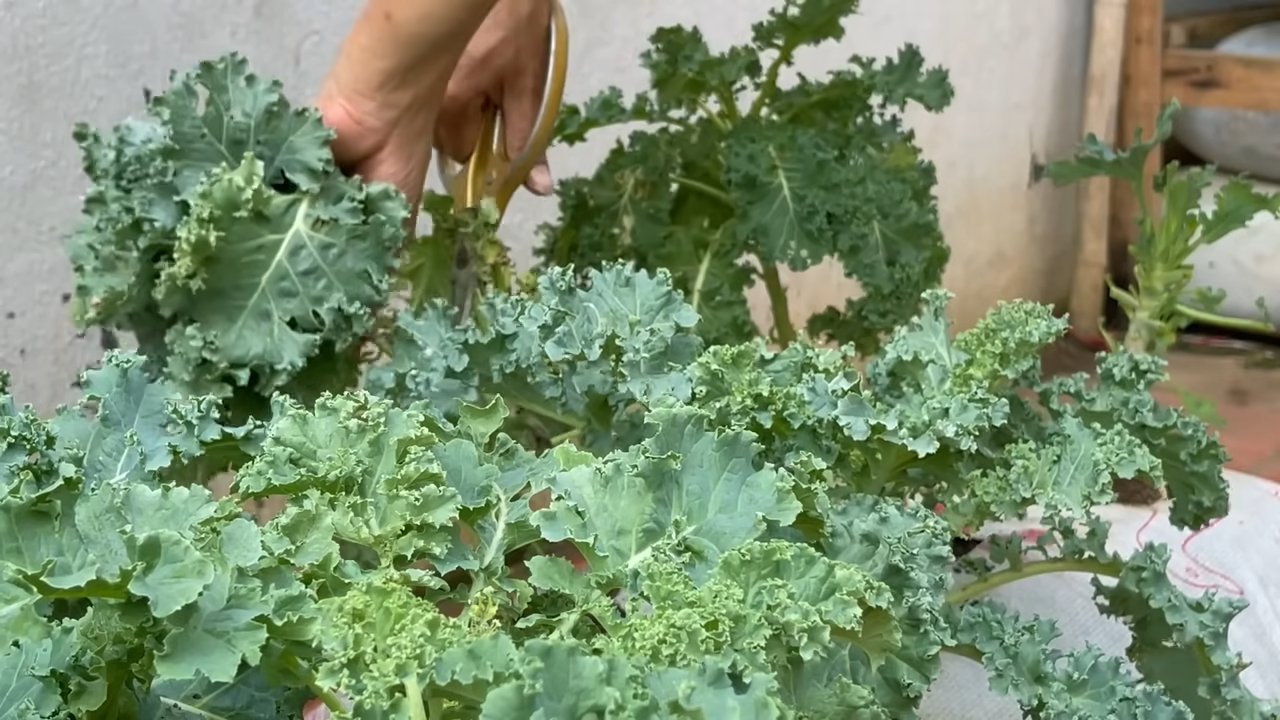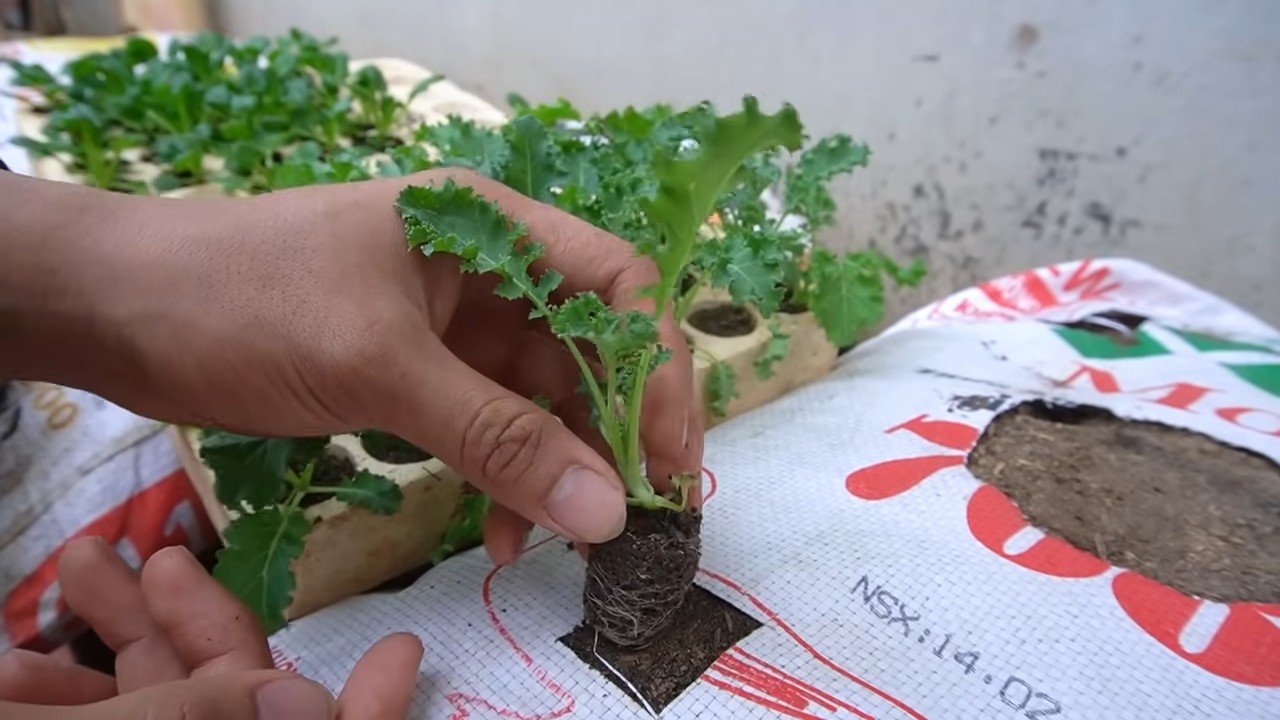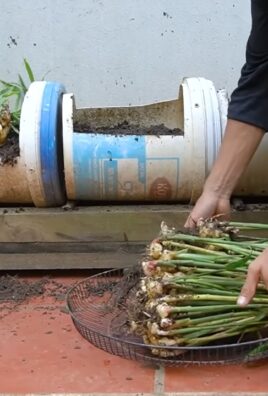Growing Kale in Soil Bags: Unlock the secrets to a bountiful harvest, even without a traditional garden! Have you ever dreamed of fresh, vibrant kale gracing your table, but felt limited by space or soil conditions? Well, dream no more! This DIY guide will empower you to cultivate your own kale oasis using a surprisingly simple and effective method: soil bags.
For centuries, humans have sought innovative ways to nurture plants, adapting to diverse environments and limited resources. From ancient hanging gardens to modern-day urban farms, the spirit of ingenuity in gardening has always thrived. Growing kale in soil bags is a testament to this enduring spirit, offering a practical and accessible solution for anyone eager to embrace the joys of home gardening.
Why should you try this DIY trick? Because it’s a game-changer! Many of us face challenges like poor soil quality, limited space, or even apartment living. Growing Kale in Soil Bags bypasses these obstacles, providing a self-contained, nutrient-rich environment for your kale to flourish. Plus, it’s incredibly cost-effective and requires minimal effort. I’m excited to share these simple steps that will have you harvesting delicious, homegrown kale in no time. Get ready to transform your balcony, patio, or even a sunny corner into a thriving kale garden!

Growing Kale in Grow Bags: A Simple DIY Guide
I love harvesting fresh vegetables directly from my garden, and kale is no exception! It’s super healthy, versatile, and surprisingly easy to grow, even if you don’t have a traditional garden. Grow bags are a fantastic solution for growing fresh kale on small balconies, patios, or even on the sidewalk in front of your house. In this article, I’ll show you step-by-step how you can easily do it yourself.
What You Need: Your Materials List
Before we get started, you should make sure you have everything ready. Here is a list of the things you will need for your kale grow bag project:
- Grow Bags: Choose grow bags made of a breathable material like felt or jute. They should have a capacity of at least 30 liters, or even better, 40-50 liters, so the kale plants have enough space to grow. I personally prefer felt bags because they drain water well and allow the roots to breathe.
- High-Quality Potting Soil: Use a well-draining, nutrient-rich potting soil. You can either buy a ready-made vegetable potting mix or mix your own. A mixture of garden soil, compost, and a little sand or perlite is ideal.
- Kale Seeds or Seedlings: You can either grow kale from seed or buy pre-grown seedlings. If you use seeds, you should start them indoors about 6-8 weeks before the last frost. Seedlings are of course easier, as you save yourself the effort of starting them.
- Organic Fertilizer: Kale is a heavy feeder and requires regular fertilizing. Use an organic fertilizer such as horn shavings, compost, or a special vegetable fertilizer.
- Watering Can or Garden Hose: For watering your kale plants.
- Garden Shears or Knife: For harvesting the kale.
- Optional: Mulch Material (e.g., straw, wood chips) for moisture retention and weed suppression.
- Optional: A Small Shovel or Trowel for filling the grow bags.
Step-by-Step Guide: Here’s How!
Now that we have everything prepared, we can start planting the kale in the grow bags. Just follow these steps:
- Prepare the Grow Bags: Place the empty grow bags where you want to grow your kale. Keep in mind that they will be heavier after filling and not so easy to move. Make sure the location is sunny, as kale needs at least 6 hours of sun per day.
- Fill with Potting Soil: Fill the grow bags with the prepared potting soil. Leave about 5-10 cm of space to the top edge of the bag. This makes watering easier and prevents the soil from overflowing when you water.
- Add Fertilizer: Mix the organic fertilizer into the top layer of soil according to the package instructions. This will give your kale plants a good start.
- Plant or Sow:
- For seedlings: Use a small shovel to dig a hole in the soil that is slightly larger than the root ball of the seedling. Carefully place the plant in the hole and fill it with soil. Gently press the soil down. Make sure that the root collar (the transition between the root and the stem) is not covered with soil. Plant several kale plants in one grow bag, but make sure they have enough space (about 30-40 cm apart).
- For seeds: Sow the kale seeds according to the instructions on the seed packet. Generally, the seeds are placed about 1-2 cm deep in the soil. Water the soil carefully after sowing.
- Water: Water the freshly planted or sown kale plants thoroughly. The soil should be well moistened, but not waterlogged.
- Mulch (optional): Cover the soil surface with a layer of mulch material. This helps to retain moisture in the soil, suppress weeds, and regulate the soil temperature.
- Secure the Location: In strong winds, it may be wise to stabilize the grow bags, for example, by leaning them against a wall or weighing them down with stones.
Caring for Your Kale: Tips for a Bountiful Harvest
After you have planted your kale, it is important to take good care of it so that it thrives. Here are some tips:
- Regular Watering: Kale needs regular watering, especially during dry periods. The soil should always be slightly moist, but not waterlogged. Check the moisture of the soil regularly with your finger.
- Fertilizing: Fertilize your kale every 2-3 weeks with an organic fertilizer. This ensures healthy growth and a bountiful harvest.
- Pest Protection: Kale can be infested by various pests, such as cabbage whites, aphids, or flea beetles. Check your plants regularly for pests and combat them with organic methods if necessary. A net over the plants can help to keep cabbage whites away.
- Weed Removal: Regularly remove weeds from the grow bags so they don’t take nutrients away from the kale.
- Remove Withered Leaves: Regularly remove withered or yellow leaves to prevent diseases and improve air circulation.
Harvest Time: When is the Kale Ready?
You can harvest your kale as soon as the leaves are large enough (about 20-30 cm long). Start with the outer leaves and harvest them as needed. The inner leaves will then continue to grow. Kale tastes best when harvested after the first frost, as the cold increases the sugar content and improves the flavor. You can continue to harvest the kale into the winter.
Additional Tips and Tricks
- Variety Selection: There are many different varieties of kale that differ in taste, appearance, and frost hardiness. Inform yourself about the different varieties before buying and choose the one that best suits your needs and preferences. Popular varieties include “Nero di Toscana” (Lacinato kale), “Halbhoher Grüner Krauser” (Dwarf Green Curled), and “Red Russian.”
- Crop Rotation: Kale belongs to the brassica family. To prevent diseases and pests, you should not grow it in the same location every year. Rotate the location regularly with other types of vegetables.
- Overwintering Kale: Kale is hardy and can remain outdoors in the winter. Protect the plants from heavy frost with a fleece or brushwood.
- Kale as Green Manure: If you no longer want to harvest your kale, you can use it as green manure. Cut the plants down and work them into the soil. This improves the soil structure and enriches the soil with nutrients.
- Reusing Grow Bags: Grow bags made of felt or jute can be used for several years. Clean them thoroughly after harvesting and store them in a dry place.
I hope this guide helps you to grow your own kale in grow bags. It’s really easier than you think and it’s worth it.

Conclusion
So, there you have it! Growing kale in soil bags is not just a gardening hack; it’s a revolution for small-space gardeners, budget-conscious foodies, and anyone looking for a simple, effective way to cultivate fresh, nutritious greens right at their doorstep. We’ve walked you through the process, highlighting the ease, convenience, and impressive yields you can expect from this method.
Why is this a must-try? Because it eliminates the need for extensive garden beds, heavy digging, and complicated soil amendments. It’s a portable, self-contained ecosystem that allows you to grow kale virtually anywhere – a balcony, a patio, a sunny driveway, even a rooftop! The improved drainage inherent in soil bags minimizes the risk of root rot, a common problem in traditional gardens, leading to healthier, more productive plants. And let’s not forget the cost savings! Soil bags are often more affordable than raised beds or containers, making this a budget-friendly option for expanding your garden.
But the beauty of this method lies not only in its practicality but also in its adaptability. Feel free to experiment with different kale varieties. Try a mix of curly kale, dinosaur kale (lacinato), and red Russian kale for a colorful and diverse harvest. You can also companion plant with herbs like rosemary or thyme around the base of your kale plants to deter pests and enhance flavor. Consider adding a layer of mulch, such as straw or wood chips, to the top of the soil bag to help retain moisture and suppress weeds. For those in hotter climates, providing some afternoon shade can prevent the leaves from scorching.
Don’t be afraid to get creative with your soil bag setup. You can arrange them in rows, stack them for a vertical garden effect, or even paint them to add a touch of personality to your growing space. The possibilities are endless!
Ultimately, the success of your soil bag kale garden depends on your willingness to experiment and adapt to your local conditions. Pay attention to your plants, observe their growth, and adjust your watering and feeding schedule accordingly. Remember, gardening is a journey, not a destination.
We are confident that once you experience the joy of harvesting your own fresh, homegrown kale from a simple soil bag, you’ll be hooked. It’s a rewarding and sustainable way to connect with nature, nourish your body, and reduce your environmental footprint.
So, what are you waiting for? Grab a soil bag, some kale seedlings or seeds, and get started today! We encourage you to try this DIY trick and share your experiences with us. Post photos of your soil bag kale gardens on social media using #SoilBagKale and let us know what worked best for you. We can’t wait to see your thriving green creations! Let’s spread the word about this easy and effective way to grow delicious and nutritious kale.
Frequently Asked Questions (FAQ)
What type of soil should I use in my soil bag for growing kale?
The best type of soil to use is a well-draining potting mix. Avoid using garden soil directly, as it can be too heavy and compact, leading to drainage problems and hindering root growth. Look for a potting mix that contains a blend of peat moss, perlite, and vermiculite. You can also amend your potting mix with compost to add extra nutrients and improve drainage. A slightly acidic to neutral pH (around 6.0 to 7.0) is ideal for kale.
How often should I water my kale plants in soil bags?
Watering frequency depends on several factors, including the weather, the size of your plants, and the type of soil you’re using. Generally, you should water your kale plants when the top inch of soil feels dry to the touch. During hot, dry weather, you may need to water daily, while during cooler, wetter periods, you may only need to water every few days. Be sure to water deeply, allowing the water to drain out of the bottom of the bag. Avoid overwatering, as this can lead to root rot. A good rule of thumb is to check the soil moisture regularly and adjust your watering schedule accordingly.
What kind of fertilizer should I use for kale grown in soil bags?
Kale is a heavy feeder, so it benefits from regular fertilization. You can use a balanced organic fertilizer, such as a 10-10-10 or 5-5-5 formula, or a fertilizer specifically formulated for leafy greens. Apply the fertilizer according to the package directions, typically every 2-3 weeks. You can also supplement with compost tea or liquid seaweed extract to provide additional nutrients and boost plant growth. Avoid over-fertilizing, as this can lead to excessive leaf growth and reduced flavor.
How much sunlight does kale need when grown in soil bags?
Kale thrives in full sun, which means at least 6-8 hours of direct sunlight per day. However, in hotter climates, some afternoon shade can be beneficial to prevent the leaves from scorching. If you’re growing kale in a location that doesn’t receive enough sunlight, you can supplement with artificial grow lights.
What are some common pests and diseases that affect kale, and how can I prevent them?
Common pests that affect kale include aphids, cabbage worms, flea beetles, and slugs. To prevent pest problems, inspect your plants regularly and remove any pests you find by hand. You can also use organic pest control methods, such as insecticidal soap, neem oil, or diatomaceous earth. Row covers can also be used to protect your plants from pests. Common diseases that affect kale include downy mildew, clubroot, and black rot. To prevent disease problems, choose disease-resistant varieties, practice crop rotation, and avoid overwatering. Ensure good air circulation around your plants and remove any infected leaves promptly.
Can I grow other vegetables in the same soil bag as kale?
While it’s possible to companion plant with kale in soil bags, it’s important to choose plants that have similar growing requirements and don’t compete for resources. Good companion plants for kale include herbs like rosemary, thyme, and sage, as well as flowers like marigolds and nasturtiums, which can help deter pests. Avoid planting kale with other brassicas, such as broccoli, cabbage, or cauliflower, as they can attract the same pests and diseases.
How do I harvest kale from soil bags?
You can start harvesting kale leaves when they are about 6-8 inches long. Harvest the outer leaves first, leaving the inner leaves to continue growing. Avoid harvesting more than one-third of the plant at a time, as this can stress the plant and reduce its yield. You can harvest kale leaves throughout the growing season, even after a light frost.
How long will kale plants last in soil bags?
Kale is a biennial plant, which means it typically lives for two years. However, in most climates, it is grown as an annual. With proper care, kale plants in soil bags can produce a continuous harvest for several months. After the first year, the plants may become less productive and more susceptible to pests and diseases. You can extend the life of your kale plants by overwintering them in a protected location or by starting new plants from seed or cuttings each year.
Can I reuse the soil from my soil bags after harvesting kale?
Yes, you can reuse the soil from your soil bags after harvesting kale, but it’s important to amend it with fresh compost and fertilizer to replenish the nutrients that have been depleted. You can also sterilize the soil by baking it in the oven or solarizing it in the sun to kill any pests or diseases that may be present. Alternatively, you can use the old soil as a soil amendment in your garden beds.
What are the benefits of growing kale in soil bags compared to traditional gardening methods?
Growing kale in soil bags offers several advantages over traditional gardening methods, including:
* **Portability:** Soil bags can be easily moved to different locations, allowing you to take advantage of sunlight and protect your plants from harsh weather.
* **Improved drainage:** Soil bags provide excellent drainage, which minimizes the risk of root rot.
* **Reduced weeding:** Soil bags are less prone to weeds than traditional garden beds.
* **Space-saving:** Soil bags are ideal for small spaces, such as balconies, patios, and rooftops.
* **Cost-effective:** Soil bags are often more affordable than raised beds or containers.
* **Easy to manage:** Soil bags are easy to set up and maintain, making them a great option for beginner gardeners.





Leave a Comment